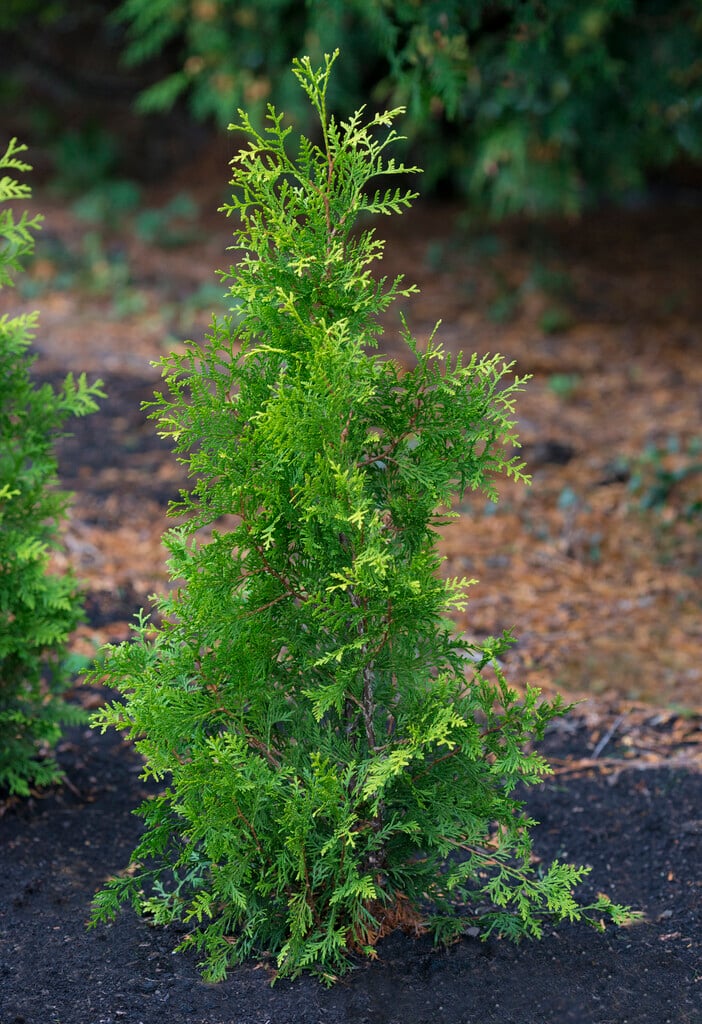Not the plant you're looking for? Search over 300,000 plants
Conifers
Size
Ultimate height
1.5–2.5 metresTime to ultimate height
5–10 yearsUltimate spread
0.5–1 metresGrowing conditions
Chalk
Clay
Loam
Sand
Moisture
Moist but well–drained, Well–drainedpH
Acid, Alkaline, NeutralColour & scent
| Stem | Flower | Foliage | Fruit | |
| Spring | Gold Yellow | |||
|---|---|---|---|---|
| Summer | Gold Yellow | |||
| Autumn | Gold Yellow | |||
| Winter | Gold Yellow |
Position
- Full sun
- Partial shade
Aspect
East–facing or South–facing or West–facing
Exposure
Exposed or Sheltered Hardiness
H6Botanical details
- Family
- Cupressaceae
- Native to GB / Ireland
- No
- Foliage
- Evergreen
- Habit
- Columnar upright
- Potentially harmful
- Harmful if eaten, skin allergen. Wear gloves and other protective equipment when handling
- Genus
Thuja are fast-growing evergreen trees of narrowly conical habit, with flat sprays of tiny, aromatic, scale-like leaves and small knobbly cones
- Name status
Trade
How to grow
Cultivation
Grow in moist but well drained soil, in full sun
Propagation
Propagate by semi-ripe cuttings in late summer
Suggested planting locations and garden types
- Architectural
- Cottage and informal garden
- Low Maintenance
Pruning
No pruning required
Pests
May be susceptible to scale insects and aphids
Diseases
May be susceptible to honey fungus and other fungal diseases, particularly thuja blight and Coryneum canker (see conifers: brown patches)
Get involved
The Royal Horticultural Society is the UK’s leading gardening charity. We aim to enrich everyone’s life through plants, and make the UK a greener and more beautiful place.
